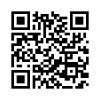FILM THE ACT OF KILLING SEBAGAI WACANA ESTETIS
Downloads
(Title: Film "The Act of Killing" as an Aesthetic Discourse). This study aims to elaborate how The Act of Killing comes as a aesthetic discourse. This was a descriptive qualitative study with content analysis method. The data were text (both audio and visual) in the film as well as the audience's review about the film and the people included. The result shows that the film is an imaginative documentary. The film tries to reveal what has been hidden, the oppressed people in terms of humanitarianism, expressively and persuasively. The humanitarian side visualized was compared to the one in audience life so that they can understand complex problem on ideology. It is "˜ideology for human' or "˜sacrificing human beings in the name of ideology (any)'. The aesthetic values in the film were emotion, beauty and understanding. The killing and torturing scenes have touched the audience's emotion. The director's cinematic skills to present horrible experience is the beauty making the audience close to the past. The statements related to "˜new insight' indicate that the film is like an understanding of a past event.
Keywords: The Act of Killing, discourse, aesthetic
Downloads
Adam, A. M. (2014). Perbandingan Dua Film G30S. Diakses pada 10 Oktober 2016 dari https://m.tempo.co/read/kolom/2014/02/14/1123
Davies, S. (2003). Definitions of Art. London&New York: Routledge
Fairclough, N. (2006). Analysing Discourse, Textual Analisis for Social Research. London&New York: Routledge
Ficky, Y. (2015). Joshua Oppenheimer, Pria Yang Membuka Sejarah Indonesia di Panggung Dunia. Diakses pada 10 Oktober 2016 dari http://www.femina.co.id/profile/joshua-oppenheimer-pria-yang-membuka-sejarah-indonesia-di-panggung-dunia.
Hamad, I. (2007). Lebih Dekat dengan Analisis Wacana. Mediator, Vol.8, No.2
Yuliawan, M. (2012). The Act Of Killing: Kisah Pembantaian PKI Yang Menuai Kontroversi. Diakses pada 10 Oktober 2016 dari http://amriawan.blogspot.co.id/2012/10/the-act-of-killing-kisah-pembantaian.html
The authors who publish this journal agree to the following requirements. The author retains the copyright regarding the work being simultaneously licensed below Creative Commons Attribution ShareAlike License.

Jurnal Diksi by Faculty of Languages, Arts, and Culture, Universitas Negeri Yogyakarta is licensed under a Creative Commons Attribution-ShareAlike 4.0 International License.
Based on a work at http://journal.uny.ac.id/index.php/diksi





















